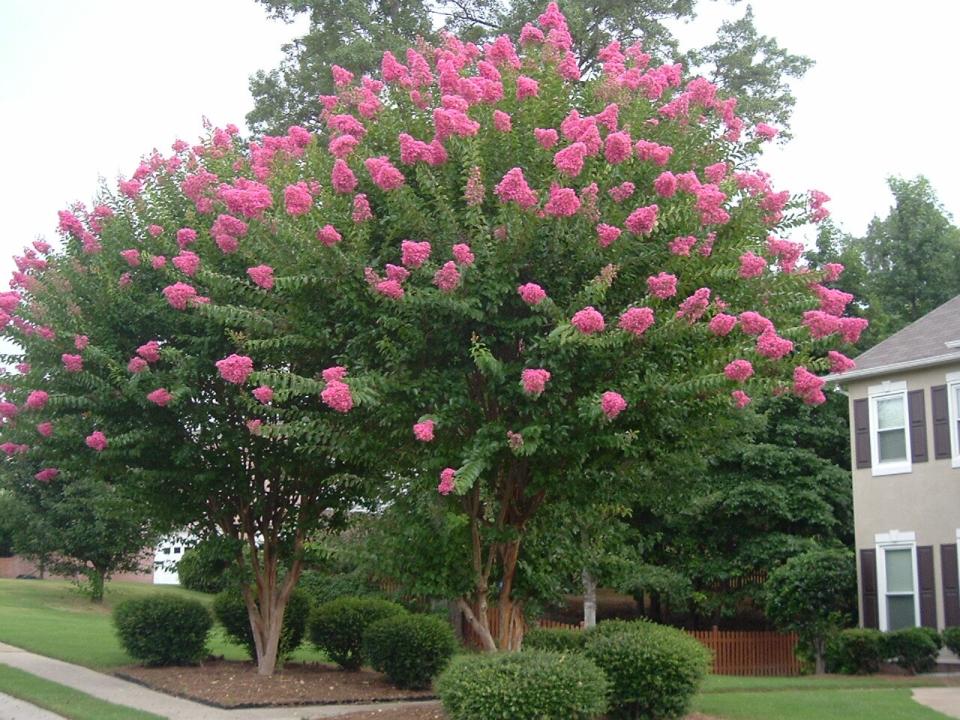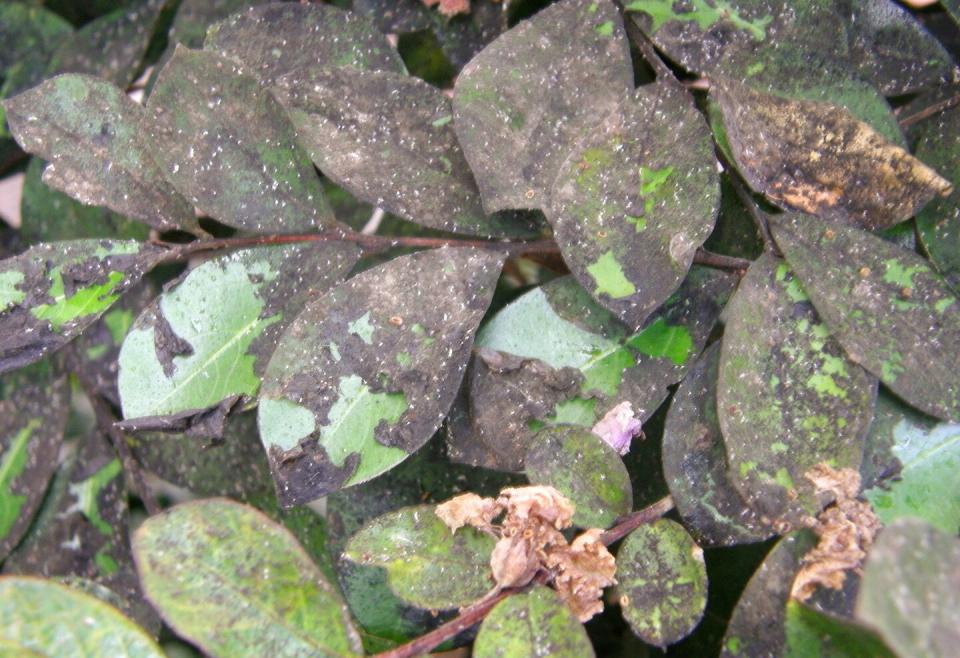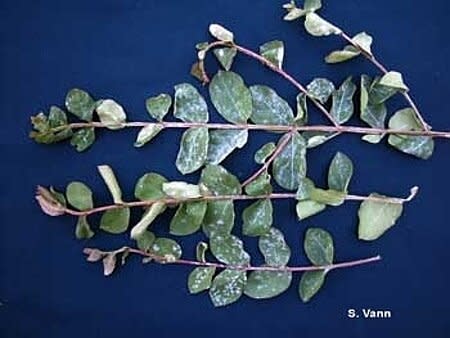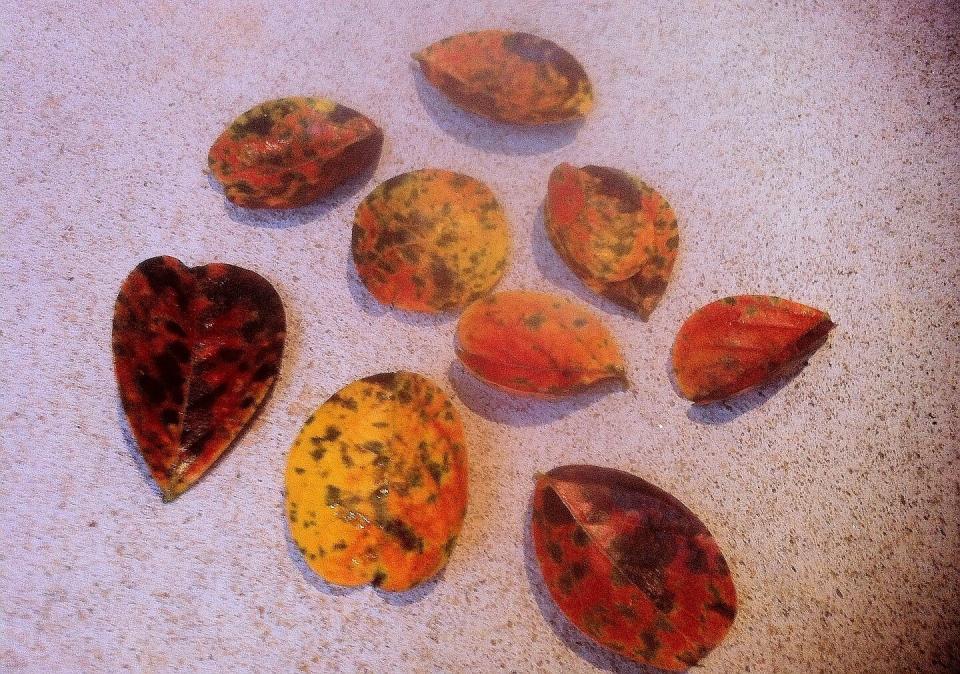What's Wrong With My Crepe Myrtle? 5 Common Problems
TABLE OF CONTENTS
On This Page
Problem #1: Sooty Mold
Problem #2: Powdery Mildew
Problem #3: Cercospora Leaf Spot
Problem #4: No Blooms
Problem #5: Asian Ambrosia Beetles
Types of Crepe Myrtles
What Crepe Myrtles Need for Good Health
Pruning: Don't Commit "Crepe Murder"
For vibrant summer color, few flowering plants can compete with the crepe myrtle. Just look around your neighborhood. Nearly every street in the South is lined with these blooming trees from mid-June to mid-August. There's plenty to love about them: They grow almost anywhere, are easy to maintain, and are available in all shapes, sizes, and every shade of red, white, purple, or pink.
Though crepe myrtles are practically maintenance-free, problems can arise. But you can avoid most of those problems from the start when picking out your crepe myrtle. Is it cold-hardy enough? This is key if you live in the Upper South. Is there plenty of sunlight? The more sun, the more flowers you'll get. How big will it grow? Crepe myrtles have a reputation for growing fast. A larger one can overwhelm your landscape, which could result in the ill-advised pruning practice known as "crepe murder." Read on for the problems we hear most about and how to fix them.

Photo: Steve Bender
Problem #1: Sooty Mold

Yuck! Black mold on crepe myrtle.
Problem: Sooty mold is a fungus that covers the leaves and looks like you just sprayed your crepe myrtle with asphalt. Sooty molds are also called black molds and are caused by several species of fungi. Rubbing removes the mold. Underneath, the leaves are green and healthy. Although the fungus is considered fairly harmless because it does not feed on plants, extremely heavy infestations can block sunlight from reaching the leaves, which may yellow and fall prematurely.
The mold doesn't feed on the foliage. Instead, it grows on sticky honeydew excreted by sucking insects like aphids, scales, and whiteflies that do feed on the leaves. Fungal growth takes place from spring through early fall. Splashing rain or water may spread the fungus to other plants.
Solution: Get rid of the insects and the black mold will go with them. Look for aphids, scales, or leafhoppers, which excrete the sticky honeydew on which sooty mold grows. Control these insects by blasting them off with water or by spraying them with insecticidal soap, horticultural oil, neem oil, or Natria Multi-Insect Control. All of these are safe, natural products available at home and garden centers. On small plants, wipe or wash off the molds with a small sponge and water. On large trees, use a hose-end sprayer to wash off the mold.
Sticky Situation: Some sap-sucking insects do not fully digest plant sap. The undigested portion is excreted as a sweet, sticky liquid called honeydew. If copious amounts of honeydew form on trees, sidewalks and other surfaces below may become coated with it and the sooty mold that follows. Ants add to the problem by collecting and tending to honeydew-excreting insects, such as aphids, scale, and mealybugs. They milk the insects for the honeydew, which they take back to other ants for food. Ants also transfer honeydew-excreting insects from plant to plant.
Problem #2: Powdery Mildew

emPowdery mildew. Photo: a href=
Problem: A rainy summer means that if your crepe myrtle is susceptible to mildew, it probably has it. Powdery mildew is a filmy, white fungus that grows on leaves and flower buds. Round, white spots on upper leaf surfaces expand and merge, covering both sides of leaves. Infected leaves turn yellowish or brown. New growth may be stunted, curled, and distorted. Fruit drops early or is dwarfed. Flower buds drop without opening.
There are many different powdery mildew fungi. The fungus spores overwinter on fruit trees. In spring, the fungi begins to grow, and spores are released to travel on the wind to young leaves. Powdery mildew thrives where cool nights follow warm days. Insufficient sunlight and poor air circulation favor its development.
Solution: Plant a mildew-resistant crepe myrtle. Almost all of the newer ones are resistant, including those named after tribes of Native Americans, such as 'Acoma,' 'Arapaho,' 'Catawba,' 'Comanche,' 'Natchez,' 'Sioux,' 'Tonto,' and 'Zuni.' 'Dynamite,' 'Early Bird,' 'Pink Velour,' 'Red Rocket,' and 'Miami' resist it, too. If yours isn't resistant, spray the foliage according to label directions in early summer with neem oil, horticultural oil, Natria Disease Control, Daconil, or Immunox. The first three are natural products. You'll probably have to spray more than once.
Control: Give plants sufficient light and air circulation. Reduce nitrogen fertilizer and pick off and destroy infected leaves and flowers.
Problem #3: Cercospora Leaf Spot

emCercospora leaf spot. Photo: Steve Bender/em
Problem: Cercospora is a leaf spot fungus that used to be fairly uncommon, but isn't anymore. The nearly universal planting of crepe myrtles in the South has made it easy for this fungus to spread. What happens is that in mid-to-late summer, brown spots form on the lower leaves. These leaves then develop fall color prematurely and drop. Fortunately, this disease is not detrimental to the crepe myrtle, but it may stunt the plant's growth.
Solution: This fungus likes sheltered areas where breezes are blocked and the foliage stays wet for long periods. One tree I planted in front of the house gets eaten up by leaf spot every year, while the one growing in the middle of the lawn is hardly touched. Some websites claim certain selections are resistant, such as 'Apalachee,' 'Sioux,' 'Tonto,' 'Tuscarora,' and 'Tuskegee.' I have doubts, though, because the one that gets devoured every year is 'Sioux.' What to do? Plant crepe myrtles in open, sunny spots where air circulates freely. If necessary, spray with Daconil, Immunox, or Natria Disease Control when spots begin to appear.
Problem #4: No Blooms
No matter where you live in the South, your crepe myrtles should have bloomed in summer. If your crepe myrtle hasn't bloomed, most likely it's due to one of three reasons:
Your plant is just too small to bloom. Give it time.
Your plant isn't getting enough sun. It likes full sun.
Some crepe myrtles bloom better than others. You may have a slacker. If so, replace it with one of the selections named above.
Problem #5: Asian Ambrosia Beetles
Problem: A tiny invader now threatens peach, plum, pear, pecan, and many other trees in the South: the Asian ambrosia beetle (Xylosandrus crassiusculus). Less than 1/4 inch long and cylindrical in shape, it is dark brown, reddish-brown, or black and may have pitted wing covers. It entered this country in 1974 near Charleston, South Carolina. Since then, it has spread into North Carolina, Georgia, Florida, Alabama, Mississippi, Louisiana, and Texas.
These tiny beetles attack both stressed and healthy plants. While beetles are present most of the year, major activity occurs in March. Females bore into stems, branches, or trunks of young trees. They lay eggs inside and introduce a fungus (ambrosia) with which to feed their young. Females remain with their young until they mature and exit the tree. Hatching females mate before leaving the tree to infest a new host. The fungus clogs the plant's water transport system, which results in wilting. It's much easier to detect the beetle's presence than the insect itself. A telltale clue is a white, toothpick-like spike of boring dust that protrudes about 1 1/2 inches from the trunk. Branches wilt and die back.
Solution: You can reduce stress on plants by making sure they are watered correctly, fertilized annually, and kept free of disease. Avoid wounding them. Once several beetles have invaded the plant, insecticides are not effective. Prune and destroy infested limbs. It's best to remove a tree with severe damage to the main trunk. For prevention, thoroughly spray trunks of susceptible plants nearby with diazinon, endosulfan (Thiodan), or chlorpyrifos (Dursban).
Types of Crepe Myrtles
Crepe myrtles are among the most satisfactory of plants for the South: Showy summer flowers, attractive bark, and (in many cases) brilliant fall color make them year-round garden performers. Long, cool autumns yield the best leaf display; sudden frosts following warm, humid fall weather often freeze leaves while they're still green, ruining the show. Here are three types:
Japanese Crepe Myrtle (L. fauriei)
Native to Japan, this tree grows 20 to 30 feet tall and wide, with upright trunks and outward-arching branches. The leaves are green and grow to have blades as long as 4 inches. These trees also have especially handsome bark: The smooth gray outer bark flakes away to reveal glossy cinnamon-brown bark beneath. Small white flowers bloom in the summer. Japanese Crepe Myrtles are also resistant to mildew and best known as a parent of hardy, mildew-resistant hybrids with L. indica. Meanwhile, the plant variety 'Fantasy' has even showier white flowers, and 'Kiowa' has outstanding cinnamon-colored bark.
Crepe Myrtle (L. indica)
This is the premier summer-flowering tree of the South. It tolerates heat and drought and does well in most soils as long as they are well-drained. They may freeze to the ground during severe winters in the Upper South, but will re-sprout. Gardeners there should plant cold-hardy selections such as 'Acoma,' 'Centennial Spirit,' and 'Hopi.' This variety is variable in size (some forms are dwarf shrubs, others large shrubs or small trees) and habit (spreading or upright).Dark green leaves are 1-3 inches long and turn yellow, orange, or red in fall. Crinkled, crepe-papery, 1- to 1 1/2-inch wide flowers in white or shades of pink, red, or purple are carried in dense clusters. The tree has an attractive trunk patter: Smooth gray or light brown bark peels off to reveal reddish brown inner bark.
Queen's Crepe Myrtle (L. speciosa)
The showiest and most tender of the crepe myrtles, this tree grows 30 to 60 feet tall, displaying huge clusters of pink or lavender flowers in June and July. Individual blossoms reach 2 inches long. Leaves reach 4 to 12 inches long and turn red in fall. The tree has smooth and mottled bark. It is a fast grower and annual pruning in winter is especially important to control size and form.
What Crepe Myrtles Need for Good Health
Planting site: A sunny location where the air moves freely will help limit powdery mildew and other diseases.
Soil: Provide moist, moderately fertile, well-drained soil.
Pruning: Don't Commit "Crepe Murder"
Don't chop your large crepe myrtles down to stubs each spring. This ruins the natural form and encourages the growth of branches that are too weak to hold up the flowers. To reduce a crepe myrtle's height, use hand pruners or loppers to shorten the branches by 2 or 3 feet in late winter, always cutting back to a side branch or bud.
Crepe myrtles bloom on new wood, so prune them in late winter or early spring to increase next summer's flower production. Pruning off old flowers in summer before they set seed may produce a second wave of blooms. Except on dwarf types, remove side branches on trunks up to the 4- to 5-foot level to reveal attractive trunks. Also remove suckers, twiggy growth, crossing branches, and branches growing toward the center of the plant. Prune dwarf forms periodically throughout the growing season, removing spent blossoms and thinning out small, twiggy growth.
